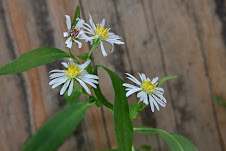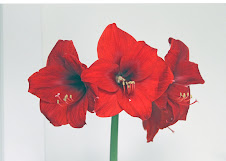Wednesday, November 14, 2012
Indian Strawberry
Indian Wild Strawberry is a wild flower which has a bad reputation. I thought this invasive groundcover was poisonous, but around the world many eat not just the berry but the whole plant. The internet is full of information on the plant’s health and medicinal benefits.
Duchesnea indica has many common names. Indian Strawberry, False Strawberry, Mock Strawberry, and She Mei are a few of its nicknames. In fact the plant is now placed in the Rose Family with the scientific name of Potentilla indica, (poh-ten-TIL-ah inn-DEE-kuh). The Rosoideae (Rose Family) has been subject to reorganization based on recent genetic analysis. It has been shown that both the wild strawberries (formerly Fragaria) and the Indian strawberries (formerly Duchesnea) are actually all part of the larger Potentilla within the Rose Family.
This miniature plant looks like a common edible strawberry plant except for size and a yellow rather than white flower. This wildflower will grow anywhere from shade to full sun. The perennial herb is naturalized throughout the U.S. and found growing in shady and sunny places in woods and grassy slopes.
The low, trailing vine has roots at the nodes. These matted roots send out runners to set new plants. The plant is invasive with quickly spreading runners and many seeded fruit. Since the plant is more or less evergreen in southern ranges; it provides a lovely groundcover for difficult areas.
Leaves are alternate light green and trifoliate, each leaflet being serrate and ovate, entire plant is finely haired. The small, yellow flowers have 5 petals, first flowers bloom in April and blooms throughout the summer till fall. If the weather is mild; the plant will bloom all year. The fruit is small, about ½ inches round, with many seeds.
The plant originated in Asia and Europe and is popular in India as a powerful medicinal herb.
Harvest young edible leaves in spring and fruit as soon as it ripens. Gather entire plant in late summer, dry for later herb use.
The fruit is 3.4% sugar, 1.5% protein and 1.6% ash. It has 6.3 mg of Vitamin C per 100 ml of juice. The fruit’s taste ranges from tart to tasteless to mild watermelon flavor. The fruit is used to cure skin diseases. The entire plant is edible and medicinal. The leaves can be included is a stew.
The whole plant is used as an anticoagulant, antiseptic, depurative and febrifuge. An infusion of the flowers is used to activate the blood circulation.. Indian Strawberry is used extensively in China as a medicinal herb and is being studied for its ability to stop the HIV virus and some forms of cancer from spreading through the body.
For years I’ve spent hours zoning away while I pull up this tiny wildflower. A habit I must break and instead direct my destroying energy to wire grass.
For additional info: http://www.naturesherbal.com/Indian_Strawberry.htm
and http://www.eattheweeds.com/potentilla-indica-mistaken-identity-2/. Also
http://www.sierrapotomac.org/W_Needham/IndianStrawberry_080617.htm
Subscribe to:
Post Comments (Atom)



















LP_gardening_2666.jpg)
LP_gardening_2668.jpg)

LP_garden_2819.jpg)

LP_flower_0563.jpg)
LP_flower_0577.jpg)
LP_flower_0545.jpg)
LP_flower_0555.jpg)
LP_flower_0539.jpg)
LP_dog_0470.jpg)
LP_snow_0467.jpg)
LP_dog_0349.jpg)
LP_tree_8153.jpg)
LP_5028.jpg)
LP_flowers_3940.jpg)
LP-grass_0889.jpg)
LP_redfox_1651.jpg)
LP_squirrel_6978.jpg)
LP_flower_6936.jpg)
LP_squirrel_6864.jpg)
LP-deer_4773.jpg)
LP_4521.jpg)
LP_1251.jpg)
LP_4585.jpg)
LP_3784.jpg)
LP_3759.jpg)
LP_3811.jpg)
LP_3816.jpg)
LP_3847.jpg)
LP_0870.jpg)
LP_4183.jpg)
LP_0891.jpg)
LP_3175.jpg)
LP_3577.jpg)

LP_3068.jpg)
LP_3058.jpg)
LP_3562.jpg)
LP_0118.jpg)
LP_3407.jpg)
LP_3150.jpg)
LP_3011+(2).jpg)
LP_3020.jpg)
LP_2830.jpg)
LP_2782.jpg)
LP_2828.jpg)
LP_1746.jpg)
LP_2648.jpg)
LP_2666.jpg)
LP_2668.jpg)
LP_2493.jpg)
LP_2611crop.jpg)


LP_2588.jpg)






LP_2126.jpg)
LP_2122.jpg)






No comments:
Post a Comment